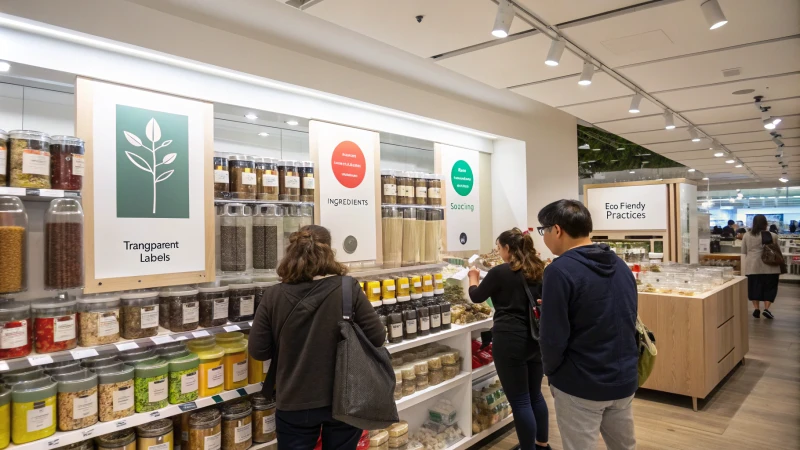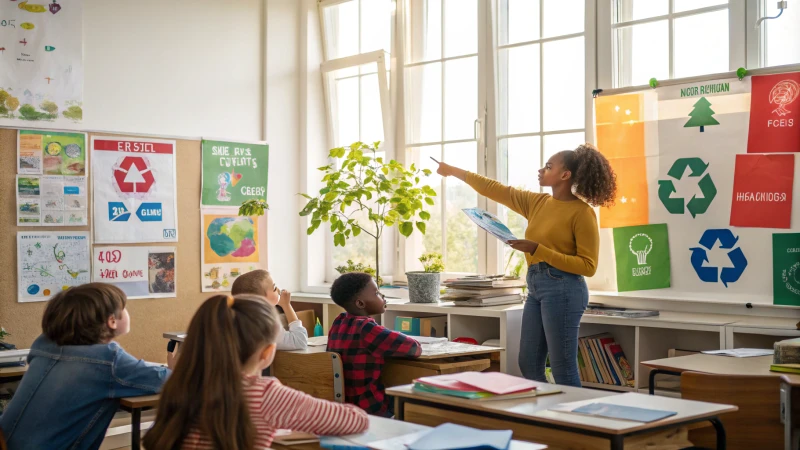
I remember when I first discovered wooden cutlery and realized it was more than just an eco-friendly trend—it's a sustainable solution.
To increase awareness about the biodegradability and renewability of disposable wooden cutlery, clear labeling, strategic marketing, and educational campaigns are essential. These efforts empower consumers to appreciate the environmental impact of choosing wood over plastic.
Thinking back to a dinner party I hosted, I made a point to use wooden cutlery instead of plastic. It was a small change, but guests noticed and asked questions. That experience taught me the power of sharing stories and educating others about the benefits of eco-friendly products. Beyond simply listing benefits, we need strategies that resonate personally with consumers to highlight how wooden cutlery contributes to a greener planet. The following sections explore actionable methods to enhance consumer understanding and acceptance of this sustainable alternative.
Disposable wooden cutlery is 100% biodegradable.True
Wooden cutlery decomposes naturally, unlike plastic, which persists in landfills.
Educational campaigns are ineffective for promoting wooden cutlery.False
Educational campaigns raise awareness and inform consumers about eco-friendly options.
Why is Wooden Cutlery an Eco-Friendly Choice?
Ever wonder why wooden cutlery is the go-to for eco-conscious folks? Let me take you through its natural charm and green credentials.
Wooden cutlery is biodegradable because it's crafted from natural materials that decompose harmlessly. Unlike plastic, these utensils break down naturally, reducing waste and pollution.

Understanding Biodegradability of Wood
Let me tell you about the time I first switched to wooden cutlery. It was at a backyard barbecue, where the gentle clink of wood against ceramic was a refreshing change from plastic. I learned that wooden cutlery is crafted from natural materials, primarily wood, which is inherently biodegradable. This means it can break down and return to the earth without releasing harmful substances. The process involves microorganisms breaking it down into simpler substances.
Imagine this: when wooden cutlery ends up in a composting facility, it decomposes alongside food scraps, turning into nutrient-rich compost. That day at the barbecue, I realized how this capability to break down naturally sets wooden cutlery apart from plastic alternatives, which can linger for centuries in landfills.
The Renewability Factor
The more I delved into wooden cutlery, the more I appreciated its renewable nature1. Trees can be replanted and grown again, ensuring a sustainable supply of raw materials. With responsible forest management practices, this cycle of growth and harvest can continue indefinitely, unlike the finite nature of petroleum used in plastic production.
Environmental Impact: A Comparative View
To better understand the environmental impact, consider the lifecycle of both wooden and plastic cutlery in the table below:
| Factor | Wooden Cutlery | Plastic Cutlery |
|---|---|---|
| Raw Material Source | Renewable (Wood) | Non-renewable (Petroleum) |
| Decomposition Time | Months to a few years | Hundreds of years |
| End-of-Life Impact | Converts to compost or soil | Contributes to pollution and landfill waste |
| Carbon Footprint | Lower due to renewable sourcing and biodegradability | Higher due to fossil fuel extraction and processing |
By choosing wooden cutlery, I feel like I'm doing my part in reducing landfill waste and carbon emissions. It's a small but meaningful step towards broader sustainability goals aimed at minimizing our impact on the planet.
Educating Consumers on Eco-Friendly Choices
One thing I've noticed is how crucial transparent information dissemination2 is in enhancing consumer awareness about sustainable products like wooden cutlery. Marketing strategies that highlight these environmental benefits can empower people to make informed choices. Educating the public on how to properly dispose of or compost wooden cutlery further reinforces its eco-friendly attributes.
Wooden cutlery not only offers practical benefits but also appeals to eco-conscious consumers3 like me, who are increasingly opting for products that align with our values. Businesses catering to this demographic can leverage the biodegradability and renewability of wooden utensils as key selling points.
Wooden cutlery is biodegradable.True
Wood decomposes naturally, unlike plastic, reducing waste and pollution.
Plastic cutlery decomposes in months.False
Plastic takes hundreds of years to decompose, unlike wood.
How Can Transparent Labeling Boost Consumer Confidence?
I remember the first time I chose a product simply because of its clear label, and the satisfaction of knowing exactly what I was buying.
Transparent labeling boosts consumer confidence by providing clear, honest product information. This fosters trust, reassures customers about product quality, and aligns with eco-conscious values, encouraging informed purchasing decisions.

The Role of Transparency in Building Trust
Transparent labeling acts as a bridge between the consumer and the brand4. I often think about how much I appreciate companies that lay it all out on their labels—no secrets, just facts. It’s like when a friend is open and honest with you; it builds this invisible bridge of trust. When brands clearly state where they source their materials or list certifications right on the label, it reassures customers about the product's authenticity.
Aligning with Eco-Conscious Values
In today's market, consumers are increasingly driven by sustainability and ethical consumption. Lately, I've noticed how much I gravitate towards products that echo my love for the planet. Transparent labeling that spells out eco-friendly practices doesn't just catch my eye—it earns my respect.
| Eco-Labeling Elements | Consumer Benefits |
|---|---|
| Material Sourcing | Informed purchases |
| Environmental Impact | Aligns with values |
| Certifications | Assurance of quality |
For example, seeing details about how wooden cutlery is biodegradable and sourced from renewable wood makes it easier for me to choose products that align with my values. It’s like finding a restaurant that offers dishes just the way you like them—satisfying in every sense.
Enhancing Consumer Education
There’s something empowering about understanding exactly what I'm bringing into my home or using daily. Educating consumers through labels can empower them to make better purchasing decisions. Labels that offer insights about environmental impact or health benefits transform me from a mere consumer into a knowledgeable participant in my purchasing decisions.
Consider how different industries are using transparent labeling to connect with consumers:
- Food Industry: When I see labels indicating organic ingredients, it reassures me as a health-conscious buyer.
- Fashion: Knowing where my clothes come from appeals to my eco-conscious side.
- Technology: Energy-efficient features attract me as an environmentally savvy customer.
Brands that educate through transparency aren't just selling products—they're building trust and loyalty.
Building Brand Loyalty
Once a brand earns my trust with its transparency, it’s hard not to stick with them. This loyalty grows from knowing they’re committed to quality and ethical standards aligned with their ethical standards5. I find myself repeatedly choosing brands I trust, even recommending them to friends. Transparent labeling isn't just about showing what’s inside the box—it’s about inviting consumers like me into a partnership built on trust and shared values.
Transparent labels increase consumer trust.True
Providing detailed product information builds trust by ensuring transparency.
Eco-labels have no impact on purchasing decisions.False
Eco-labels align with consumer values, influencing informed purchases.
How Does Education Promote Eco-Friendly Alternatives?
Ever wondered how education can transform our world into a greener place? It’s fascinating how learning can guide us towards sustainable choices and a brighter future.
Education is crucial for cultivating environmental awareness, enabling individuals to make informed choices. By weaving eco-consciousness into educational curriculums, it empowers communities to adopt sustainable habits and champion eco-friendly products.

Understanding the Impact of Environmental Education
I remember a time when I realized the significance of environmental education—it was during a school project on waste management. It wasn't just about memorizing facts; it was about connecting the dots between our everyday actions and their impact on the planet. Concepts like biodegradability6 and renewable resources suddenly made sense, and I found myself advocating for small changes, like switching to wooden cutlery.
Bridging Knowledge Gaps
An informed public has the power to shift markets and demand better choices. Imagine being part of a workshop where you learn to spot the difference between genuinely eco-friendly products and greenwashed7 ones. It's empowering! Education fills these gaps through seminars and school programs, equipping us with the tools to be conscious consumers.
| Eco-Friendly Product | Characteristic |
|---|---|
| Wooden Cutlery | Biodegradable and renewable |
| Reusable Bags | Durable and reduces waste |
| Solar Panels | Renewable energy source |
Empowering Change Through Curriculum
Incorporating sustainability into the curriculum can be transformative. I remember lessons on the renewability of wood8 that sparked discussions in class. These discussions turned into actions, like choosing wooden over plastic products, which ultimately benefits the environment.
Community Engagement and Awareness
Education isn't limited to classrooms. Community initiatives like local workshops and campaigns engage people across different age groups and backgrounds. Imagine joining a community workshop discussing consumer eco-awareness9 over a cup of coffee. Such initiatives create platforms for sharing knowledge about the environmental impacts of products.
Utilizing digital platforms also broadens the reach of these educational efforts, providing access to engaging articles, videos, and interactive tools that promote sustainable practices.
By fostering an understanding of eco-friendly alternatives through education, we're not just making informed choices—we're shaping a future that values sustainability in every aspect of life.
Education helps identify genuinely eco-friendly products.True
Education teaches consumers to distinguish between eco-friendly and greenwashed products.
Wooden cutlery is not a renewable resource.False
Wooden cutlery is made from wood, a renewable resource when sourced sustainably.
How Does Marketing Drive Sustainability Awareness?
Have you ever wondered how marketing could actually save the planet?
Marketing is pivotal in sustainability awareness, guiding consumers toward eco-friendly practices and products. By highlighting sustainable benefits and fostering transparency, marketing helps shift preferences to environmentally conscious choices.

Educating Consumers through Marketing
Marketing is essential in educating consumers10 about sustainable practices and products. I remember the first time I truly understood the impact of my choices on the environment. It was a campaign about the benefits of using wooden cutlery over plastic. The message was simple but powerful—it showed me how small changes could significantly reduce my carbon footprint. By incorporating sustainability into their messaging, brands can effectively communicate the benefits of eco-friendly choices.
Promoting Sustainable Products
From my own experience working with WonBon, I’ve seen firsthand how promoting the ecological benefits of products can transform consumer behavior. By emphasizing these benefits, companies can promote sustainable options11 and encourage environmentally conscious purchasing. This approach not only boosts sales but also aligns with the growing consumer demand for sustainability.
| Product Feature | Eco-Benefit |
|---|---|
| Biodegradable | Reduces landfill waste |
| Renewable Resource | Supports reforestation |
When we market our wooden cutlery, we don’t just sell a product—we tell a story of sustainability and responsibility by showcasing its renewable nature.
Enhancing Brand Transparency
Transparency has become a cornerstone in how we connect with our customers. When companies provide clear information about their sustainability practices, they can enhance brand loyalty12. I’ve found that when we openly share information about our sustainability practices, it builds trust and loyalty. For instance, labeling our products with certifications or detailing our sourcing processes reinforces our brand's dedication to environmental stewardship.
Influencing Consumer Behavior
Marketing isn’t just about selling products; it's about influencing behavior. Through targeted marketing strategies, brands can influence consumer behavior towards more sustainable habits by creating narratives around the impact of eco-friendly choices to help shift consumer perceptions13. By crafting stories that illustrate the broader impact of these choices, we’re able to inspire a shift in consumer habits.
Leveraging Digital Platforms
The digital age has opened up exciting avenues for spreading sustainability messages. The rise of digital marketing offers unparalleled opportunities for spreading awareness through platforms like Instagram and TikTok which allow us to engage with vast audiences through creative content. Social media campaigns and online content can reach a vast audience, making it easier to engage consumers with interactive and informative content. I’ve seen how social media campaigns can effectively share sustainability success stories14 and resonate with eco-conscious consumers.
By integrating these strategies into our marketing efforts, we can play a crucial role in promoting sustainability awareness and encouraging responsible consumer behaviors.
Marketing educates consumers on sustainable practices.True
Marketing campaigns often highlight eco-friendly benefits, informing consumers.
Digital platforms hinder sustainability awareness.False
Digital platforms enhance reach and engagement for sustainability messages.
Conclusion
Increasing consumer awareness of disposable wooden cutlery's biodegradability and renewability requires clear labeling, strategic marketing, and educational campaigns to promote eco-friendly choices over plastic alternatives.
-
Learn how forests can be sustainably managed for continuous wood supply, ensuring ecological balance. ↩
-
Discover strategies that enhance public understanding of sustainable products, fostering informed purchasing decisions. ↩
-
Understand the characteristics and preferences of consumers who prioritize sustainability in their purchasing decisions. ↩
-
Learn how transparent labeling strengthens consumer trust and brand relationships through clear product information. ↩
-
Explore how adhering to ethical standards can boost consumer trust and enhance brand reputation. ↩
-
This link explains the biodegradability of wooden cutlery, helping readers understand its environmental benefits. ↩
-
Understanding greenwashing can help readers identify truly sustainable products. ↩
-
This link explores how wood is a renewable resource, supporting sustainable product choices. ↩
-
This link discusses the importance of consumer awareness in promoting sustainable practices. ↩
-
Learn how marketing informs consumers about sustainable practices, influencing their choices positively. ↩
-
Discover how brands effectively market their sustainable products to appeal to eco-conscious consumers. ↩
-
Understand why transparency is vital in building trust in sustainable marketing strategies. ↩
-
Explore how marketing strategies encourage consumers to adopt sustainable habits. ↩
-
See how digital marketing platforms are used to spread sustainability messages widely. ↩

